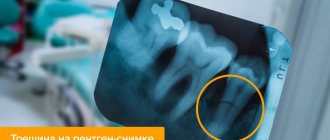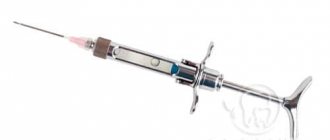Lymph nodes are part of the human immune system. They can be compared to biological filters that do not allow bacteria, fungi, and viruses to penetrate into vital organs and systems. Quite often, the lymph glands become inflamed in the neck, especially in children. What to do in this case, and how to treat it?
Why do the lymph nodes in the neck become inflamed?
If the lymph node on the right or left side of the neck is swollen or inflamed, this indicates the presence of an infectious process in the body. This condition is called lymphadenitis. It can develop against the background of sore throat, tonsillitis, flu, pharyngitis, periodontitis, caries, and colds. In rare cases, the disease occurs due to pathologies of the thyroid gland, metabolic disorders, alcohol intoxication, allergies, and connective tissue injuries. Other problems can also affect the state of the lymphatic system, for example, vitamin deficiency, hypothermia, stress, and nervous strain. Treatment will depend on the true cause of the inflammation.
What to do if the lymph node is swollen?
It is not difficult to recognize enlarged lymph nodes. They become larger and, when palpated, reach the size of a walnut. In this case, pain occurs during swallowing and palpation. The glands become dense to the touch. If they are soft, suppuration is suspected. There is redness in the problem area, general malaise in the form of lethargy, apathy, drowsiness, and increased body temperature.
Inflamed lymph nodes in the neck area can trigger the development of meningitis, as they are located close to the brain.
If lymphadenitis develops in a child, it is accompanied by moodiness, sleep disturbances, refusal to eat, and swelling of the neck. Body temperature may rise and pain may occur when swallowing. Often in 1-3 year old children, this condition indicates the onset of scarlet fever, rubella, and acute respiratory infections. At the first suspicion of swelling of the lymph glands, you should:
- examine the neck area where inflammation is felt;
- examine the enlarged node for pain (if it does not hurt, then this indicates a disruption of the immune system).
If you feel discomfort when pressing on the sore side, the node is motionless, lumpy, you need to undergo diagnostics in the hospital. Additionally, you should examine the throat for the presence of a sore throat, as well as the oral cavity if caries or stomatitis is suspected. A healthy oral cavity has a mucous membrane without plaque, clean, and the teeth are white, without damage or black spots.
The thyroid gland is an organ of the endocrine system that controls the metabolism and production of iodine-containing hormones in the body. A balanced, properly formulated diet helps improve the functioning of the thyroid gland and prevent the development of diffuse goiter and other diseases. Read more in the article: “what the thyroid gland doesn’t like.”
Symptoms of inflammation of the cervical lymph nodes
The most important manifestation is the appearance of some compactions and swelling at the sites of the nodes. When pressed, a person may feel pain.
With the progressive development of the disease, the patient develops:
- general weakness and malaise;
- loss of appetite;
- headache;
- elevated temperature.
Children often develop intoxication due to the inflammatory process.
Enlargement of the cervical lymph nodes can be chronic or acute.
Chronic lymphadenitis
A condition characteristic of people with severely reduced immunity as soon as they develop any kind of disease, even a mild form of a cold. At the same time, the inflamed nodes are painless both during remission and during exacerbation of the chronic form. In rare cases, suppuration occurs. Chronic enlargement of the lymph nodes in the neck can accompany the development of tuberculosis at different stages - such lymphadenitis usually passes without fever, or with slight fluctuations to subfebrile values.
Acute form
It is a complication of a specific disease, accompanied by purulent processes in the lymph nodes, a sharp increase in temperature to 38-39 degrees. In this case, the skin over the node acquires a red tint, similar in shape and appearance to a boil. The further the disease progresses, the larger the size of the lymph node becomes, and its contours lose clarity.
Without medical help, such a condition becomes the cause of the development of sepsis or adenoma.
Unilateral enlargement of the lymph nodes of the neck
Cervical or submandibular nodes, enlarged on one side, signal the possible development of lymphoma or a tumor process of a non-lymphoid nature in the neck or head. It can be combined with unilateral inflammation of the supraclavicular lymph nodes, as well as those located in the area of the scalenus muscle, if, for example, metastases begin to spread from the tumor into the chest cavity or gastrointestinal tract.
Virchow's node is a unilateral enlargement of the supraclavicular node in metastases of gastric cancer.
Inflammation of the lymph nodes in a child
The main reason is the presence of some infectious process and its effect on the body. In approximately 80% of cases of disease, node enlargement does not occur. However, if the child has a weak immune system, his painful condition will most likely cause lymphadenitis. For example, inflammation of the lymph nodes can occur due to mumps, tonsillitis or laryngitis.
The development mechanism looks like this: after bacteria enter the lymphatic channels, they are transferred to the lymph nodes. In the lymph nodes, after pathogenic microorganisms enter, the process of producing special cells to fight infection begins. For the most intense release of lymphocytes (protective cells), the size of the lymph node increases.
Severe inflammation occurs because the body is unable to cope with the bacterial load. The process may even lead to the formation of pus in the cavity of the node. The skin in the area where lymphadenitis develops becomes hyperemic and swollen.
The illness in a child begins with general malaise. The child becomes lethargic and capricious, and loses his appetite. Inflammation of the lymph nodes may be accompanied by fever and signs of intoxication.
It is very easy to determine the location of the lesion by touch; in acute cases it becomes visually noticeable. On palpation it gives off pain; the tissues above the node feel swollen and stretched. The condition may be accompanied by headache, chills, and weakness.
A slight enlargement of one lymph node, especially in an infant, may indicate that it simply began to work a little more actively than others, against the background of mild forms of illness, or after recovery.
Gradually it regresses and acquires normal size.
The baby’s occipital lymph nodes may become enlarged:
- due to measles;
- with rubella;
- with mononucleosis;
- with chickenpox;
- against the background of toxoplasmosis.
It is precisely such diseases that can often provoke inflammation of the nodes on the back of the head in a child. In severe cases, their increase can be noticed. The baby's face takes on a puffy expression.
In addition, the lymph nodes in the neck increase in size with cat scratches. This syndrome is relevant for children who have pets and who are often in contact with felines. Cat saliva contains a large variety of microorganisms. They can easily enter a child’s body if an animal bites or scratches him. Lymphadenitis can be observed within 2-3 days after receiving the wound.
Colds provoke inflammation of the lymph nodes in children, to which various diseases literally “stick”. In the presence of infectious diseases, lymphadenitis develops most quickly in the place closest to the entrance gate of the infection, so an inflamed cervical lymph node may indicate the development of diseases of the upper respiratory tract, throat, and head.
Lymphadenopathy in adults
The development of pathology in adults is most often caused by infectious factors, for example, diphtheria, tuberculosis, syphilis, brucellosis, rubella viruses, herpes, measles, fungal infections (actinomycosis, histoplasmosis), chlamydia and mononucleosis.
The problem may also be damage to the oral cavity by bacteria or viral microorganisms, but this condition is more common in children.
About 5% of cases of lymphadenopathy in men and women are associated with non-infectious factors, including the development of oncological processes - lymphoma, leukemia, neuroblastoma.
Nonspecific infection is a condition that is quite rare in people with a low level of immunity. This type of pathological process develops due to opportunistic microflora, which normally lives constantly in the human body. While a person is healthy, the immune system is able to suppress its activity, keeping it at a safe background level. If favorable conditions appear for the activation of the flora (injuries, stress, illness, hypothermia), the immune system is no longer able to restrain its intense vital activity, and the person falls ill.
The first, most characteristic symptom is an enlargement of the lymph nodes to a size of more than 1 centimeter (inguinal - more than 2 centimeters). Depending on the etiological factor, the further course of the disease may be different.
Pain during inflammation of the lymph nodes is a sure sign of an inflammatory process.
Pain without enlargement at the site of the lymph node
Pain in the lymph nodes is not always accompanied by their enlargement. If the affected person has pain in the lymph nodes, but they are not enlarged or inflamed to the touch, this may indicate the presence of residual effects of a sore throat, ARVI, or some other respiratory infections. Doctors say that the duration of the painful syndrome after recovery can be used to judge how well a person’s immune system works: the longer the nodes hurt, the weaker the immune response.
In addition, the cause of pain in nodes without enlargement may be local infection, which does not affect general well-being.
Inflammation in oncology
The anatomical features of the neck structure cause frequent inflammation and the development of metastases in the cervical lymph nodes - this is due to the large number of lymphatic and blood vessels, as well as nerve fibers in this part of the body.
For cancer of various localizations, cervical nodes are indicated by protruding round formations with relatively clear contours. On palpation, they are characterized by painlessness, dense and elastic texture, and slight mobility.
Metastases appear in the nodes of the neck due to cancerous tumors in the following organs:
- in the larynx;
- in the lips and tongue;
- in the thyroid gland;
- in the stomach;
- in the skin of the neck and head.
Inflammation of the deep lymph nodes cannot always be felt, but some asymmetry is noticeable in the appearance of the neck.
Malignant cells in lung or esophageal cancer can enter the right supraclavicular node, and if the patient has complaints of inflammation of the left node, this may be a consequence of the spread of malignant tumors in the liver, stomach, colon or rectum.
Condition of the lymph nodes after chemotherapy
In some cases, during radiation treatment and chemotherapy for oncology, lymph nodes, including those in the neck, may become inflamed in patients. This happens due to the high sensitivity of lymph node follicles to cytostatic toxins. The development of lymphadenopathy after chemotherapy is caused by damage to lymph node cells, a decrease in the number of lymphocytes and leukocytes in the blood, as well as a specific reaction of the body to infection.
What diagnostics do they undergo?
To find out the cause of inflammation and enlargement of the lymph node, the patient may be referred for an X-ray of the neck and submandibular area, ultrasound, magnetic resonance or computed tomography. Be sure to take blood and urine tests, throat and nose cultures for pathogenic flora.
The first step is to visit an otolaryngologist. He finds out what condition the ENT organs are in. If everything is in order with the nasal and oral cavities, ears, and upper respiratory tract, the presence of tuberculosis, syphilis, toxoplasmosis, AIDS, and pathologies of the endocrine system is excluded. To do this, the patient is sent for consultation to specialists:
- endocrinologist;
- infectious disease specialist;
- dentist;
- surgeon
A biopsy of the affected lymph node helps to exclude the development of cancer. Such research is carried out extremely rarely, but it is the most effective. The tissue is taken for analysis and examined in a laboratory setting. The specialist can also refer you for additional tests on an individual basis.
The immune system is one of the most important organ systems. Its role is protection from external or internal harmful factors. If it works properly, it protects the body from systemic, seasonal diseases. Read more in the article: “what increases immunity in adults.”
Diagnosis of the disease
During the initial examination, the doctor tries to identify the location of inflammation of the lymph node and determine in detail the area of pathology. To establish an accurate diagnosis and prescribe effective treatment, it is necessary to conduct a number of examinations and laboratory tests:
- polymerase chain reaction analysis;
- general blood analysis;
- biopsy to differentiate malignant and benign neoplasms;
- Ultrasound of the lymph node.
Culturological research of biological samples that are sown in nutrient media is practiced. Based on the content of formed colonies, the type of infectious agent, the intensity of the inflammatory process, and the resistance of microbes and viruses to pharmacological drugs are determined. Doctors of narrow specializations - otolaryngologists, dentists, endocrinologists, oncologists, infectious disease specialists, hematologists - can be involved in the diagnosis.
How can I help a person if a knot in his neck is inflamed?
There are a lot of conservative and traditional medicine to eliminate pain and inflammation of the lymph node on one side of the neck. It is important to understand why the pathological process occurred. Often, when the gland is swollen on the right or left, men and women are diagnosed with throat infections, cytomegalovirus, problems with the endocrine system, inflammation of the left or right tonsil, toxoplasmosis or caries.
In children, the lymph nodes become enlarged and hurt more often than in adults. This could be a reaction to the BCG, DTP vaccination, or to the development of diseases of the ENT organs. Physiotherapy, medications from the group of antibiotics, anti-inflammatory, painkillers, and disinfectants can help cope with unpleasant symptoms.
Pharmacy and homemade ointments and creams are also effective.
It is advisable to use folk remedies as additional treatment. These are alcohol and herbal compresses, tinctures, and decoctions. It is not recommended to warm the inflamed node with warm lotions. This can worsen the situation and spread the infection throughout the body.
Causes of inflammatory processes in the lymph nodes
For what reasons can a person begin to be bothered by inflamed nodes in the neck?
Typically, lymphadenitis is a concomitant syndrome:
- some infectious and viral diseases, for example, manifests itself in chickenpox, mononucleosis, herpes, rubella;
- diseases of the oral cavity, nasal passages, respiratory tract (with sinusitis, sore throat, colds, stomatitis);
- decreased immunity;
- injury or mechanical impact on nodes;
- states of hypothermia;
- lack of vitamins and some useful microelements;
- allergies;
- nervous disorders such as stress or depression;
- sexually transmitted diseases, including syphilis or HIV.
In young children, enlargement and pain on palpation in the lymph nodes may develop during teething. Sometimes inflammation occurs in women during pregnancy.
Against the background of decreased immunity, a person may experience chronic inflammation of the lymph nodes, not only in the neck, but also in the groin, armpits, back of the head, in the collarbone area, and in the abdominal cavity.
It should be noted that normally a person may have a slight enlargement of the lymph nodes in the neck - up to a size of no more than 1 centimeter, in the groin - up to 2 centimeters. As for cases where inflammation manifests itself more intensely, this condition requires mandatory diagnosis in order to determine its etiology. So, for example, if inflammation is localized in the nodes in the neck on the right and left, this may indicate the development of mononucleosis, tuberculosis, sarcoidosis, lymphoma, infectious lesions of the upper respiratory tract, and also occurs with a highly sensitive reaction to vaccination against the tuberculosis pathogen. Lymphadenitis in the nodes behind and in front of the ears develops with rubella, under the lower jaw - with chronic tonsillitis or gum diseases. If gradual or sudden inflammation of all groups of lymph nodes throughout the body occurs simultaneously, that is, multiple, this pathology is characteristic of the early stage of development of HIV infection. With lymphoma, the condition of the nodes is characterized as painless, while they become mobile. If a person develops metastases in the nodes, they are felt upon palpation as dense and fused.











